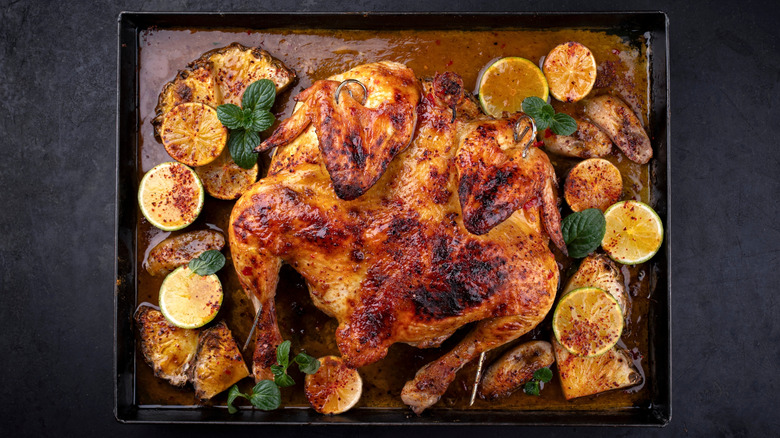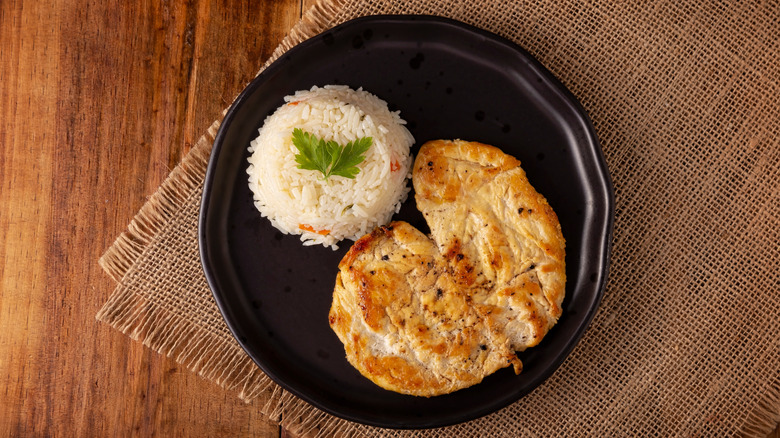Is There Any Difference Between Spatchcocking And Butterflying Chicken?
In the culinary world, the words "spatchcocking" and "butterflying" are often used interchangeably, but are they the same? Some people say there's no difference, while others argue some distinctions set them apart.
To spatchcock a chicken, you must cut the backbone out of the whole bird, then flip it over and press down on the breastbone to flatten it out. Keep pressing until you hear a crack — this is the breastbone breaking. Most experts say this technique cuts down on cooking time and exposes the bird's flattened surface area to more heat, helping it cook evenly. Many people also like the aesthetics of a spatchcocked chicken for presentation.
This process is also frequently referred to as butterflying because you're opening up the chicken like a butterfly's wings. The term butterfly, however, isn't exclusively used for whole poultry. A lot of recipes call for butterflying boneless chicken breasts, which entails cutting through the center of the filet and opening it up into two thinner pieces that are still attached in the middle. Regardless of which term you prefer, both of these cuts are chicken hacks that are total game changers if you're looking for a quicker cook and crispier exterior.
What are the differences between spatchcocking and butterflying?
Some believe the term "spatchcock" came from the Irish in the 18th century as a portmanteau of the term "dispatch the cock." Others say it could come from the word "spitchcock," a term used even earlier to refer to an eel being split before cooking. In modern use, however, it's exclusively used for whole poultry — you can also spatchcock other whole birds like turkey or duck.
Butterflying, on the other hand, is a technique that can be used for many different types of meat, including fish filets, beef, pork cuts, and shrimp. Still, when butterflying any of these, the idea is the same: It's meant to reduce the cooking time and give the cut more surface area. With shrimp, for example, butterflying can help them appear larger. Butterflying a thick cut of steak gives you more area to sear for a tasty crust. Butterflied cuts of meat can also be stuffed, like this stuffed skirt steak with cheese. You can even butterfly lobster tails.
Ultimately, we could argue that the distinction boils down to the square-versus-rectangle argument. Spatchcocking is a type of butterflying specific to whole poultry, while butterflying is a broader umbrella term for the technique of splitting meat to open it up.

